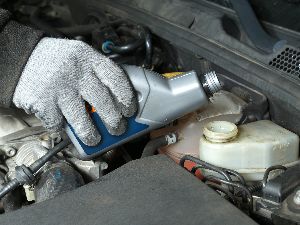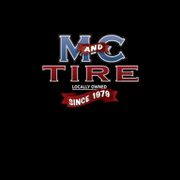
Brakes are a crucial safety feature that help slow the speed of a vehicle and bring it to a stop on demand. However, like every other component of your car, they can experience wear and tear over time. Luckily, proper driving habits and routine maintenance can ensure the operation and longevity of your braking system and reduce the need for brake repairs.
How Should You Drive Your Vehicle?
Anticipate Stops
Some last-minute braking is unavoidable, but in general, you can anticipate most stops by paying attention to the road in front of you. As soon as you see brake lights on vehicles in front, lift up on the gas pedal and start to brake. This results in a gradual stop that is easier on the braking system, as opposed to an abrupt stop that will cause more wear and tear.
Follow the 3-Second Rule
When driving behind someone, it's important to have adequate time to anticipate their actions. By leaving at least three seconds of space between your vehicle and the one in front, you have more space to brake if you need to stop suddenly. Additionally, stop-and-go traffic exerts stress on the brakes and reduces brake pad life. With enough space between you and the car ahead, you won't have to hit the brakes as often when stuck in traffic.
Plan Your Route
Every stop wears down the brakes, so you should minimize the number you take to get a longer life out of the system. When possible, plan the driving route you're going to take to your destination, and choose the path with the least number of stops. This would probably mean that you will stick to highway driving as much as possible.
How Can You Maintain the Brakes?
Schedule Professional Inspections

Ideally, your vehicle should be inspected by a brake repair professional at least once every six months. This will help you prevent operational issues, keep the system components in good condition, and ensure the brake fluid is clean and full.
Monitor Dashboard Lights
If your brakes aren't working right, an indicator may light up on your dashboard. Instead of ignoring this light, have it checked out by a mechanic as soon as possible and limit your driving as much as you can until then. This could be the result of a serious issue.
Check Brake Fluid
The fluid helps apply pressure to the brakes. You can check the fluid by opening the hood and locating the master cylinder at the back of the engine bay on the driver's side. If the fluid level in the transparent reservoir is below the "minimum" line, add more to it or take your vehicle into a professional who can top it off for you.
When you need brake repairs or maintenance in the Kalispell, MT, area, trust M & C Tire. For over 40 years, they have been providing a variety of automotive services, including brake work, oil changes, and wheel alignments, as well as a comprehensive selection of new tires. Call (406) 752-9662 to request a quote or visit them online to explore their services.
About the Business
Have a question? Ask the experts!
Send your question

